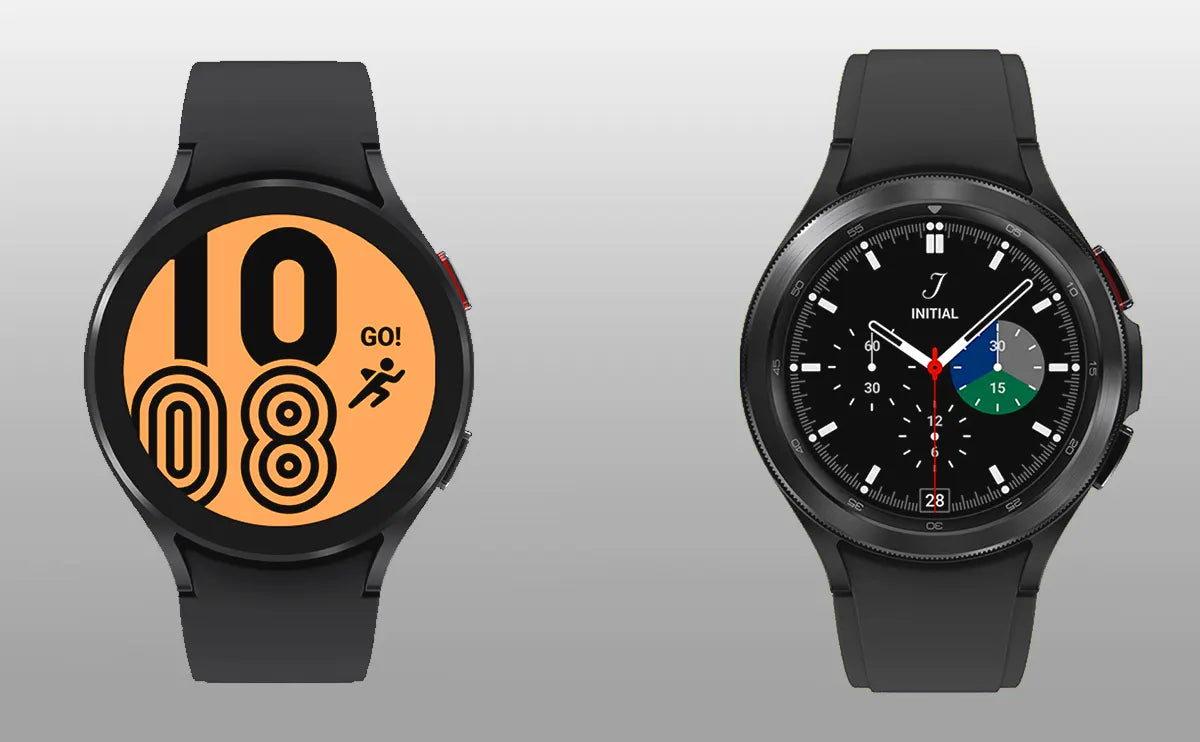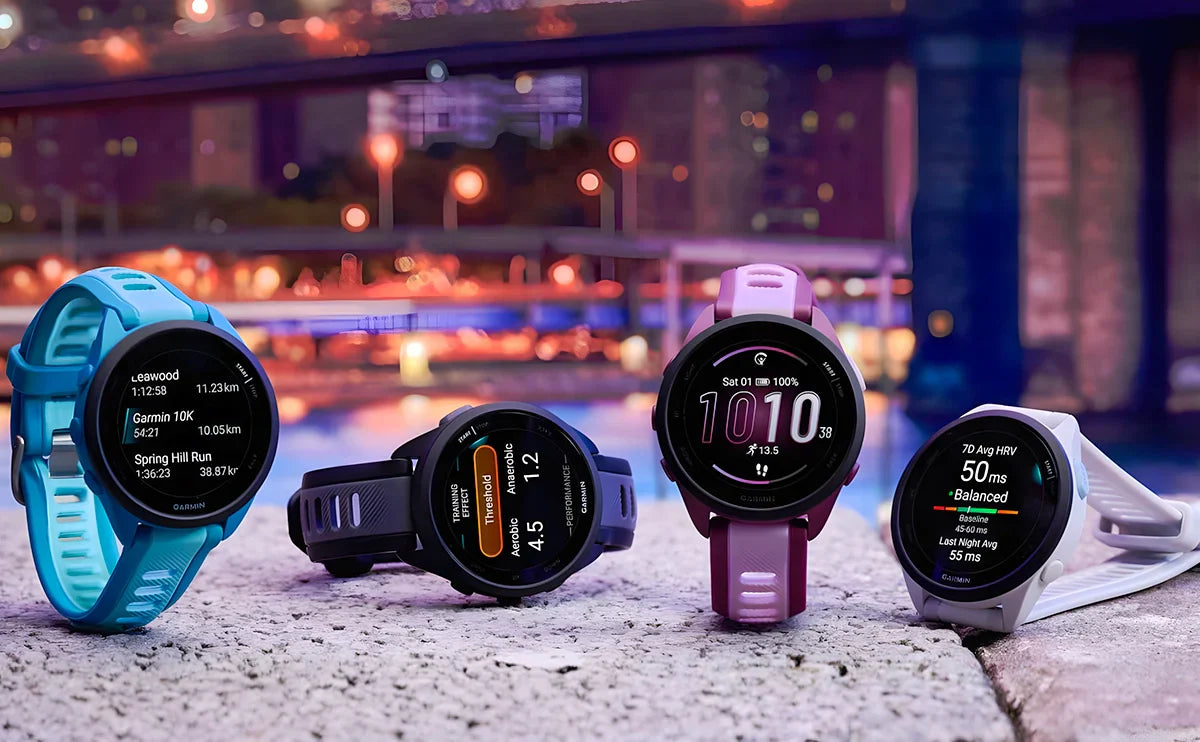Main content:
- Samsung Galaxy Watch 4 vs. Galaxy Watch 4 Classic - Design and Size
- Samsung Galaxy Watch 4 vs. Galaxy Watch 4 Classic - Materials and Straps
- Samsung Galaxy Watch 4 vs. Galaxy Watch 4 Classic - Health and Fitness Tracking
- Samsung Galaxy Watch 4 vs. Galaxy Watch 4 Classic - OS and User Experience
- Samsung Galaxy Watch 4 vs. Galaxy Watch 4 Classic - Battery Life
- Samsung Galaxy Watch 4 vs. Galaxy Watch 4 Classic - Price Comparison
- Samsung Galaxy Watch 4 vs. Galaxy Watch 4 Classic - Conclusion & Buying Recommendation
In the world of smart wearables, the Samsung Galaxy Watch 4 and Galaxy Watch 4 Classic stand out as the brand’s flagship releases from 2021. These two models not only mark Samsung’s first adoption of Google’s new Wear OS 3 but also highlight a bold evolution in health tracking and smart user experiences. While they share many internal features, their design philosophies, target audiences, and usage scenarios are distinct. The Galaxy Watch 4 caters more to active, younger users, while the Watch 4 Classic leans into a timeless, analog-inspired aesthetic ideal for professionals.
Samsung’s collaboration with Google represents more than just a software shift- it signals a major reshaping of the smartwatch ecosystem. By streamlining its product lineup, Samsung is clearly redefining its wearable strategy.
So which one is right for you: the Galaxy Watch 4 or the Watch 4 Classic? This in-depth comparison will walk you through every key difference.
Also Read Other Samsung watch review and comparison below:
Samsung Galaxy Watch Ultra review
Samsung Galaxy Watch Ultra vs. Apple Watch Ultra 2
Garmin Venu 3 vs Samsung Galaxy Watch 6
Samsung Galaxy Watch 4 vs. Galaxy Watch 4 Classic - Design and Size
In terms of appearance and size, the Galaxy Watch 4 and Watch 4 Classic showcase two distinctly different design philosophies. The Galaxy Watch 4 focuses on a lightweight, modern look, available in 40mm and 44mm options. It features an aluminum body that is slim and light, offering comfortable wear ideal for everyday use and sports. Its touch-sensitive bezel adds a futuristic touch, though the black edges around the screen are more noticeable, emphasizing a minimalist tech aesthetic.
In contrast, the Watch 4 Classic emphasizes a heftier, traditional feel with 42mm and 46mm sizes, crafted from stainless steel and equipped with a physical rotating bezel. This bezel not only provides excellent tactile feedback but also enhances operational precision. The bezel’s engraved markings add visual depth, making the watch resemble a classic mechanical timepiece- well suited for formal occasions and business users.
In summary, the Galaxy Watch 4 is slimmer and more modern, perfect for those who prioritize technology and portability; meanwhile, the Watch 4 Classic wins with its classic look and substantial build, catering to users who prefer traditional style and premium feel. Your choice depends on your personal style and usage needs.

Samsung Galaxy Watch 4 vs. Galaxy Watch 4 Classic - Materials and Straps
The Galaxy Watch 4 features a lightweight aluminum frame that is stylish and durable, making it ideal for sports and everyday wear. In contrast, the Watch 4 Classic uses a sturdy, scratch-resistant stainless steel body with a more premium feel, offering a heavier and more traditional luxury watch aesthetic.
Regarding straps, the Watch 4 comes in four color options with soft, comfortable materials that fit snugly on the wrist. The Classic model offers only two silicone strap colors- silver and black- which, while durable, feel somewhat limited. Both watches support standard 20mm strap widths, allowing users to easily customize their look. Samsung’s H-Wing design enhances the watch’s fit on the wrist, improving the accuracy of health monitoring.
If you’re looking to upgrade your Samsung watch straps, Bandletic offers a wide range of high-quality options. Whether you prefer breathable and durable nylon straps like the TAC-V-Bagpack 20mm and Fidlock-V-MagTech 20mm, or soft and skin-friendly silicone straps like the Sport-S-MagAir 20mm, we have styles to meet your needs. Our Samsung Galaxy Watch 4 bands and Galaxy Watch 4 Classic bands combine fashion with functionality to give your smartwatch a unique touch.
In summary, the Galaxy Watch 4 is lightweight and modern, while the Watch 4 Classic is sturdy and classic. Pairing the right strap can maximize your wearing experience.

Samsung Galaxy Watch 4 vs. Galaxy Watch 4 Classic - Health and Fitness Tracking
The Galaxy Watch 4 and Watch 4 Classic share nearly identical health monitoring capabilities, both equipped with Samsung’s latest BioActive sensor. They support real-time heart rate and blood oxygen saturation (SpO) tracking, helping users stay informed about their body status during daily activities and workouts.
Sleep tracking covers duration, quality, and sleep stage analysis, with the ability to detect snoring, aiding users in improving sleep habits. Both watches also use bioelectrical impedance technology to measure skeletal muscle mass, body fat percentage, and body water content, providing valuable data for fitness and health management.
For exercise, they support over 90 workout modes with automatic recognition, recording detailed metrics like heart rate, distance, speed, and calories burned, helping users optimize their training plans. Stress monitoring analyzes heart rate and activity data to assess stress levels and offers relaxation reminders.
Notably, the Watch 4 Classic supports ECG functionality via the Health Monitor app. Although it’s not officially confirmed whether the Watch 4 has this feature, practical usage suggests minimal differences between the two.
Overall, the Galaxy Watch 4 and Watch 4 Classic offer virtually the same comprehensive and professional health and fitness tracking features. The choice between them mostly depends on personal preference for design and wearing comfort rather than functionality.
Samsung Galaxy Watch 4 vs. Galaxy Watch 4 Classic - OS and User Experience
The Galaxy Watch 4 and Watch 4 Classic share nearly identical hardware, both powered by Samsung’s in-house Exynos W920 dual-core processor built on advanced 5nm technology. The CPU performance is about 20% faster than the previous generation, with a 10x improvement in GPU graphics processing. Equipped with 1.5GB RAM and 16GB storage, they ensure smooth system operation and support multitasking and app usage seamlessly.
Both watches run the Wear OS 3.0 operating system, jointly developed by Samsung and Google, featuring a clean, highly customizable interface. Users can swipe down to access quick settings, swipe up to open the app list, and swipe left or right to view notifications and widgets, offering intuitive and fluid navigation. Although the Watch 4 lacks a physical rotating bezel, it features a digital touch bezel with haptic feedback, enabling easy switching between weather, apps, and other screens, enhancing user interaction.
The system supports flexible customization of watch faces, app shortcuts, notification settings, time display, and always-on screen, balancing personalization with practicality. Health functions like SpO monitoring, sleep analysis, and snore detection are also integrated, providing comprehensive health data support.
Overall, the Galaxy Watch 4 and Watch 4 Classic deliver consistent, smooth, and user-friendly OS and feature experiences. The choice between them should focus more on design and comfort preferences, as their system performance and usability show no significant differences.

Samsung Galaxy Watch 4 vs. Galaxy Watch 4 Classic - Battery Life
Regarding battery capacity, the Galaxy Watch 4 and Watch 4 Classic share the same battery sizes for their respective models: the 40mm and 42mm versions come with a 247mAh battery, while the larger 44mm and 46mm versions are equipped with a 361mAh battery. The higher capacity battery theoretically offers longer battery life.
In terms of endurance, both watches can typically last about a day and a half under normal usage. With light usage, the Watch 4 Classic tends to perform slightly better, lasting up to two days. Enabling power-saving modes can extend battery life, but actual performance varies depending on individual usage patterns and which features are active. In heavy use scenarios, such as continuous GPS tracking or frequent app use, battery life may drop to less than a day.
Charging speed is similar between the two models, both supporting wireless charging. They charge efficiently, typically boosting from 30% to 80% in about half an hour, with a full charge taking around 1.5 to 2 hours.
Overall, the Galaxy Watch 4 and Watch 4 Classic show minimal differences in battery capacity and endurance. Real-world experience depends mainly on usage habits, so users should consider their personal battery needs and usage intensity to plan charging accordingly.

Samsung Galaxy Watch 4 vs. Galaxy Watch 4 Classic - Price Comparison
In terms of pricing, the Galaxy Watch 4 is positioned as the more affordable base model with an aluminum case. The 40mm Bluetooth version is officially priced at $199.99, while the 44mm Bluetooth version costs $279.99. Opting for the LTE version raises the price to around $329.99. In contrast, the Watch 4 Classic is a higher-end option featuring a stainless steel body and a physical rotating bezel, with a starting price of $349 -and it was initially listed at nearly $350 at launch.
Overall, the Watch 4 is better suited for users looking for a lightweight, budget-friendly option, while the Classic caters to those who prefer a more traditional, premium design. The price difference clearly reflects their distinct market positioning.
Samsung Galaxy Watch 4 vs. Galaxy Watch 4 Classic - Conclusion & Buying Recommendation
In summary, the Samsung Galaxy Watch 4 and Galaxy Watch 4 Classic are nearly identical when it comes to hardware performance, health tracking, fitness features, and system experience. The real differences lie in their design, materials, interaction style, and pricing.
The Galaxy Watch 4 is better suited for users who prefer a sporty look and lightweight wear, thanks to its aluminum case. It offers great value for money and covers all the essential smart features, making it an ideal choice for most users- especially those with budget considerations.
On the other hand, the Watch 4 Classic features a more traditional watch design with a stainless steel body and a physical rotating bezel that provides a satisfying, tactile interaction. If you favor classic aesthetics or enjoy the feel of a real rotating bezel, the extra ~$100 for the Classic model may be worth the upgrade.
Ultimately, the decision between Watch 4 and Watch 4 Classic depends on your personal preferences regarding style, interaction, and budget. Regardless of your choice, both models offer a robust, health-focused smart experience and remain among the most recommended Wear OS smartwatches even today.





Share:
What Garmin Didn’t Tell You: Garmin Forerunner 570 vs Forerunner 265 In-Depth Comparison
Samsung Galaxy Watch Ultra (2025) Review - Rumors and What to Expect